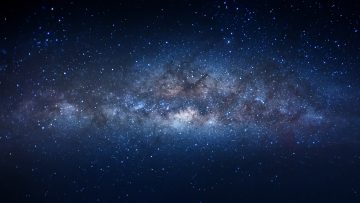- Public health authorities in the Bay area confirmed that a patient survived a dual coronavirus-flu infection.
- The patient was between 20 and 65 years of age and works in the “health care realm,” although specific details about the case were not disclosed.
- Health officials are urging people in the US to get flu vaccines, which will provide some protection against dangerous dual infections.
Health experts have warned for months that fall and winter will bring back the regular flu epidemic, and that’s why it was so important to reduce the COVID-19 caseload significantly. The coronavirus-flu convergence, informally called “Twindemic,” can be quite dangerous. COVID-19 doesn’t preclude a person from getting the flu and vice-versa, so the two viruses can co-exist inside the same host. On top of that, health experts are worried about the availability of medical resources to deal with both epidemics. It’s not just the personnel or the PPE, but also the hospital beds. That’s why they recommended that people should get their flu shots this year, so they can at least have a better chance of avoiding one of the two respiratory illnesses.
Dr. Anthony Fauci aimed for a reduction in cases to 10,000 a day going into the fall, but the US never got close to that goal before the virus started surging again. We’ve now reached a new COVID-19 pandemic peak of over 80,000 daily cases, and there’s no sign the curve will go down anytime soon. Against that backdrop, the first report of a confirmed coronavirus-flu co-infection was just confirmed, and it shouldn’t be surprising at all.
The first known case of COVID-19-flu comes from the Bay Area and was confirmed on Thursday in Solano County. Officials urge residents to go for flu shots that can reduce the risk of contracting the illness. They also said people need to double down on social distancing and mask-wearing.
“This is a very clear indication of the potential for this to occur,” Solano County health officer Bela Matyas told SF Chronicle. “We now have flu in our community at the same time we have COVID … Contracting either disease may weaken your immune system and make you more susceptible to the other disease.”
The local health department did not provide many details about the patient, saying only that he or she was aged between 20 and 65, works in the “health care realm,” and has recovered from both illnesses.
While there are effective treatments for the flu and the illness isn’t as deadly as COVID-19, there’s not enough information on what a dual infection can do. Doctors worry that contracting both diseases could lead to a more severe illness, as the body would be battling two different enemies at the same time.
What makes things worse is the clinical aspect of the flu and COVID-19. The two diseases share the same symptoms, so it’s difficult to tell them apart without PCR testing. The Chronicle notes that severe symptoms appear earlier in the flu compared to COVID-19. These are high-fever, headache, and body aches for the flu. Meanwhile, severe coronavirus symptoms can include fever, cough, and shortness of breath, and they can appear from two to 14 days after exposure — or even longer.
But in real life, patients might not be able to tell whether they’ve been exposed to someone who had the flu or the novel coronavirus. And when the symptoms do appear, you might not be able to tell when you were exposed. Therefore, you won’t be able to say whether you’re experiencing early symptoms of the flu or COVID-19 symptoms. And when the two illnesses overlap, the resulting symptoms might not really make sense.
One symptom that appears mostly in COVID-19 as opposed to the flu is the sudden loss of smell and taste, but not all covid patients experience it.
While it’s logical to assume that a COVID-19-flu co-infection would be much worse than just catching COVID-19, we don’t have enough data to state that definitively. Doctors in New York conducted a small study in the early months of the pandemic and they found no difference in outcomes for patients infected with just the coronavirus or with both. A separate study from Stanford found that 20.7% of people infected with COVID-19 also had a secondary respiratory infection.
The flu vaccine can provide added protection, but it can also help eliminate worry. “Getting a flu vaccine this year is more important than ever,” Matyas said. “Vaccination not only reduces the risk of catching the flu, it also reduces the chance that you’ll be hospitalized. In other words, the flu vaccine will provide some protection and reduce your chances of needing to be hospitalized if you do get sick.”
There’s also the hope that the influenza epidemic will be significantly reduced this season, thanks to face masks and social distancing measures. That’s what happened in the southern hemisphere during its winter season this year.








